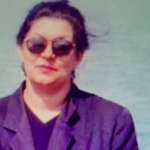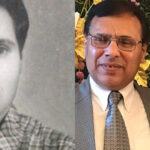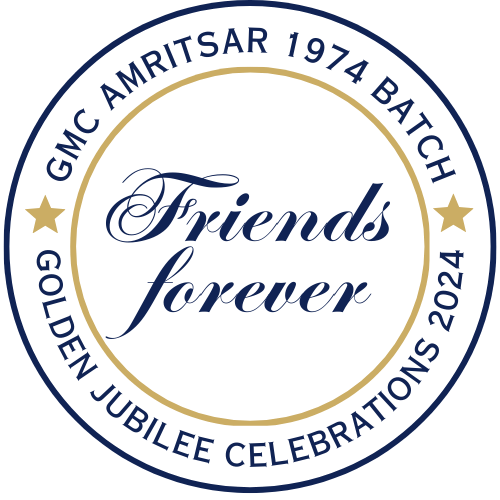It is no co-incidence that I had the opportunity to meet with four national leaders who were or became Prime Ministers (PM) of India. The list begins with Rajiv Gandhi and includes Inder Kumar Gujral, Manmohan Singh, and the current PM Narendra Modi. The latter three were not PM when I met them. The memories of these meetings are etched in my memory, and I want to share these with you.
The opportunity to meet Rajiv Gandhi arose during the historic 93 days long strike by Punjab Civil Medical Services (PCMS) doctors in the year 1989. After about 60 days of strike our negotiations with the Punjab administration had reached a dead end. The state was under Governer’s rule and intervention of central government was needed to take the matter forward. Our first meeting in Delhi was with Mr. Ghulam Nabi Azad who was General Secretary of All India Congress Committee (AICC) and in-charge of Punjab Congress. He arranged our meeting with Sheila Dixit, Minister in Prime Minister’s office but it was scuttled at the last minute by the then Governor Sidharth Shankar Ray. The intelligence bureau person who was liaising with us from day one called me and said we were up against a very strong adversary and meeting with anyone in PMO will be an uphill task. We approached the Joint Action Council (JAC) of Delhi doctors (who had recently won a marathon battle with central government) who took us to Dr. S C Vats. Dr. Vats was Chairman of the Doctors’ Cell of AICC and was close aide of PM and looked after Amethi constituency. He listened to our story and promised to arrange a meeting with Rajiv Gandhi. To our utter surprise he obtained a fifteen-minute appointment with PM for us.
Prime Minister used to meet 10 to 15 delegations everyday in the morning. It was very important that we effectively presented our case in the stipulated time. Everybody was reluctant to take this responsibility as any mistake would cost us dearly. Dr. Narinder Sharma from Chandigarh had prepared charts using MS Excel and wanted someone to assist him with the presentation. I was assigned the responsibility to assist him. We rehearsed our presentation umpteen times.
Finally the D-Day arrived, and we reached PM’s residence cum office. In the sprawling lawns fifteen to twenty sheds had been erected where various delegations used to sit. Our delegation comprising of about fifteen doctors which also included a couple of JAC Delhi doctors eagerly waited for PM to arrive. Finally he arrived and there was hushed silence. My first reaction was how handsome he looked. He was wearing a steel-gray suit, very fair, and had a chiseled nose. He started going from one delegation to another. Finally he reached the group immediately preceding us. It comprised of boys and girls from some north-east state. He spent almost half an hour with them, and we were tense they might have eaten into our time.
And then it was our turn. We all stood around him and Dr. Vats introduced us to him. Then it was our turn. Dr. Narinder took out laminated sheets of charts and we briefly presented our case. He gave us a patient hearing. Punjab was passing through difficult times. He was very receptive as he was able to understand the value of a peaceful, democratic, and organic nature of our movement. He knew it had to be resolved in a justifiable manner. He immediately asked his PA to arrange our meeting with Mr. P Chidambaram who was a minister without portfolio in PMO. One of the doctors from Delhi whispered in my ear that Chidambaram was known for his anti-doctor stance, and we should avoid him. I looked towards Dr. Manjit Singh Randhawa. Time was running out and I immediately looked at Rajiv Gandhi and conveyed our reluctance. He asked us to meet Mr. P Vasudevan IAS who was Principal Secretary to PM. We relied on the wisdom of Delhi doctors, but I believe it was a tactical mistake. He was a bureaucrat and was easily influenced by Punjab IAS lobby which was bent upon crushing our agitation. At the end of the meeting PM posed for a group photo with us. I think some one of us has this photo.
The news of our meeting with PM spread like wildfire. The bureaucrats in Chandigarh panicked when they were asked to submit a report to PMO within 24 hours. Mr. Ojha, the chief secretary arrived in Delhi with the report the next day. Ojha was successful in influencing Vasudevan who changed his colors in no time. It is said that Sidharth Shankar Ray threatened to resign from his post if PMO intervened in the matter. Those of you who have some interest in politics would remember the importance of Governor Ray in those days. Under political and bureaucratic pressure PMO retracted. We had a second meeting with Rajiv Gandhi a week or ten days later. A smaller delegation of which I was not a part met him. Rajiv Gandhi was visibly agitated, and he reprimanded Dr. Vats for arranging a second meeting. Rajiv Gandhi had given in to the pressure.
However I still remember every minute of the first meeting although our efforts remained fruitless. We did not give up and continued our strike for almost three more weeks. Rest in my next blog.




